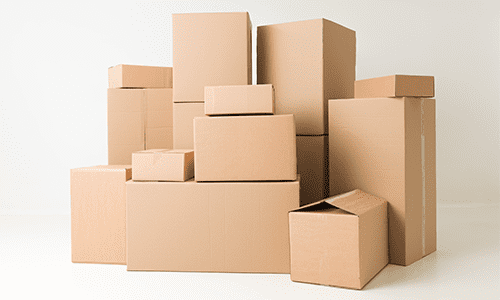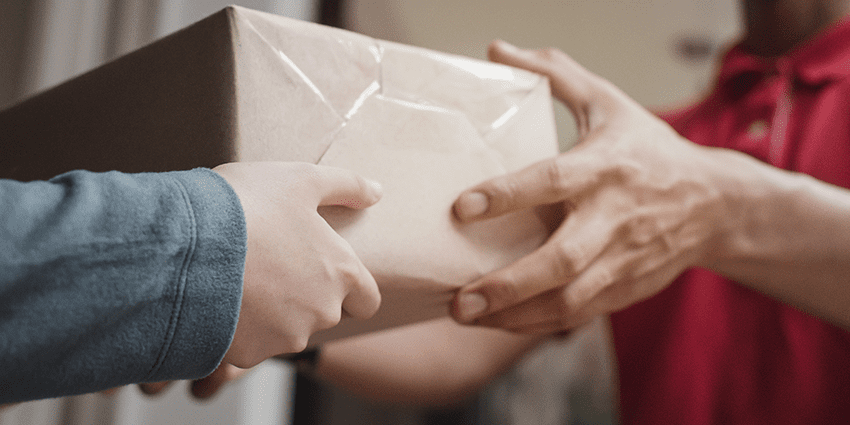If you don’t send parcels regularly, it’s easy to overlook specific requirements- especially with international parcel services. To make things easier, we’ve compiled a guide of everything you need to know about sending a parcel.
We recommend you read through this article to prepare and ship parcels successfully the first time. Let’s dive straight in!
1. Check if your item is suitable for shipping
Many everyday items are not suitable for sending like perfume or aftershave. Before you start packaging your item, you are responsible for checking if it is prohibited or restricted in the parcel network.
Our Prohibited & Restricted Items Guide lists what you cannot send through any of our courier services. You can filter results by destination country and courier. Bear in mind that every country and courier has restrictions, so it’s best to check with both. We recommend contacting local customs for further advice if you’re unsure.
2. Pick your outer packaging

Once you’ve established that your item is safe to send, it’s time to find a suitable cardboard box. You’ll want to select a box big enough to fit what you’re sending comfortably but small enough so it doesn’t leave much room for movement.
We recommend selecting a strong cardboard box (ideally a double wall cardboard box) as they are better suited to sending heavier goods. If you want to reuse a box, ensure you’ve removed previous labels and that it is free from holes or tears.
3. Protect your item(s)
Your shipment will travel on and off different vehicles and move along automated conveyor belts. You must package your item sufficiently for transit to reduce the risk of damage. You can do this by wrapping each item in protective material like bubble wrap and filling any space in the box with cushioning materials- scrunched newspaper or shredded paper works well for this purpose. Secure the parcel with strong packing tape to reduce the risk of losing items and to stop moisture from coming in.
Some items, like bikes, flooring or fishing rods, require more attention than others. At the same time, everyday things like clothing and books often need to be better packaged. It’s worth reading our specific packaging blog posts for further guidance on how to pack your parcels.
4. Measure and weigh your parcel
The size and weight of your parcel will determine how much you pay for shipping. Once you have sufficiently packed your item, you must grab a set of scales and a rigid measuring tape or ruler. Record the parcel’s length, height and width in centimetres, and note the weight in kilograms. If in doubt, we recommend you round up your measurements by one or two centimetres.
Once your parcel is at the sorting hub, it will be remeasured and weighed by machinery. Therefore, failure to accurately provide the correct measurements could lead to surcharges, failed collections or the parcel being returned.
5. Enter the parcel details into the Interparcel Quote Tool
Once you’ve obtained your parcel details, enter them into our Quote Tool to generate a list of suitable courier services. Typically, the more you pay for a delivery, the quicker the item will arrive.
We offer so many delivery services that you can filter results by courier, speed, price and between Collection or Drop Off delivery. We offer Economy, Next Day, Timed and Same Day services for domestic deliveries. In contrast, international deliveries include Economy, Express and Timed shipping options.





6. Complete the necessary shipping paperwork
Once you’ve found the right courier service, it’s time to complete the necessary booking information. Once processed, we will generate the relevant shipping labels and documentation for you to attach to the outside of your parcel.
You will be asked to complete a customs invoice for all international-bound parcels from the UK. You must provide accurate information to speed up customs and avoid surcharges or fees. Get your commercial invoice right the first time by reading our guide.
For some Drop Off services, you’ll also have the option to print labels in-store, free of charge, when you drop off your package.
7. Purchase Enhanced Transit Cover

During the booking process, you’ll have to enter the value of your goods. If your parcel’s value exceeds the included transit cover, you may be offered additional transit cover. Additional transit cover (enhanced transit cover) protects the item up to its total declared value, so you wouldn’t be out of pocket if your parcel was damaged in transit.
8. Track your parcel
Once your parcel is collected, you can check its progress using our online tracking tool. All Interparcel bookings include free tracking as standard. During booking, you can tick a box to receive email notifications or SMS notifications about the whereabouts of your parcel.
Our video guide explains how to send a parcel with Interparcel. It takes you through each stage of the shipping process from packaging to completion - with the help of our office pooches.
Manage shipments in Shipping Manager
Remember, it’s often quicker to create new orders through Shipping Manager. You can manually add shipments, import orders via CSV, or sync orders from multiple eCommerce platforms.
Alongside Shipping Manager, other business tools like Rule Manager help speed up manual processes and streamline parcel delivery. You can view all our tools and features in our latest roundup blog post.
Of course, our customer service team are also available to assist with any queries you may have about the parcel journey. Call them, drop them an email or send them a message on live chat for assistance.










 Facebook
Facebook Twitter
Twitter Instagram
Instagram Linked In
Linked In YouTube
YouTube